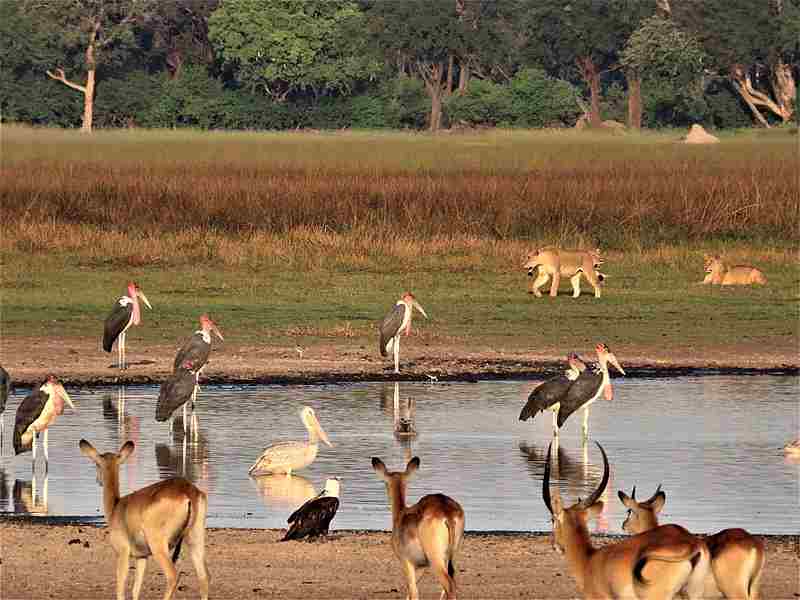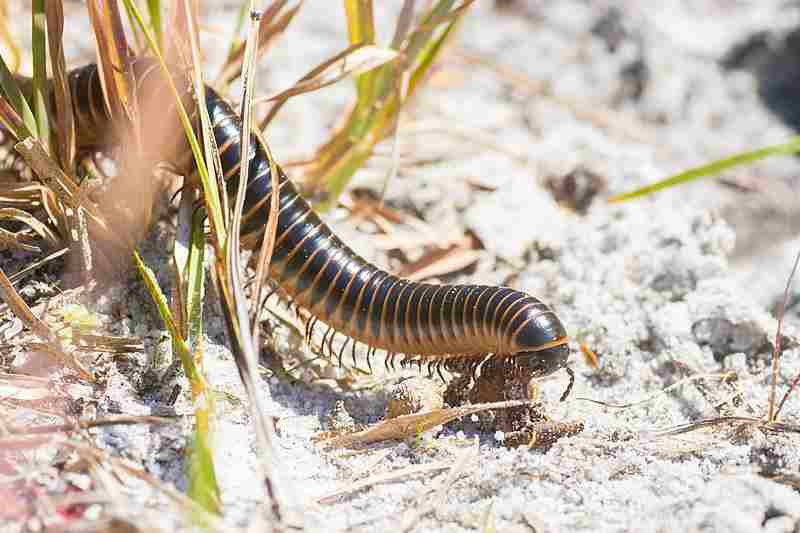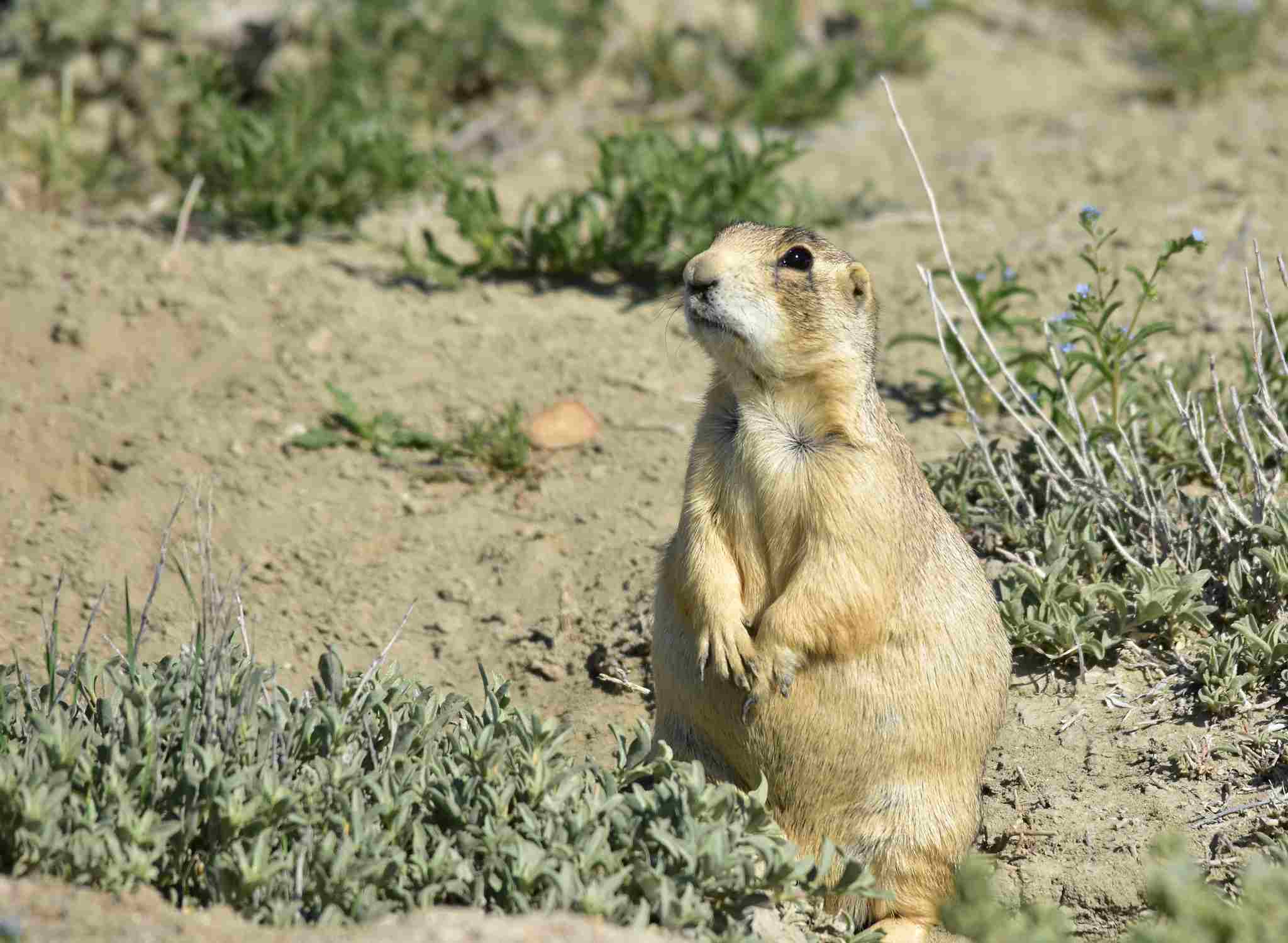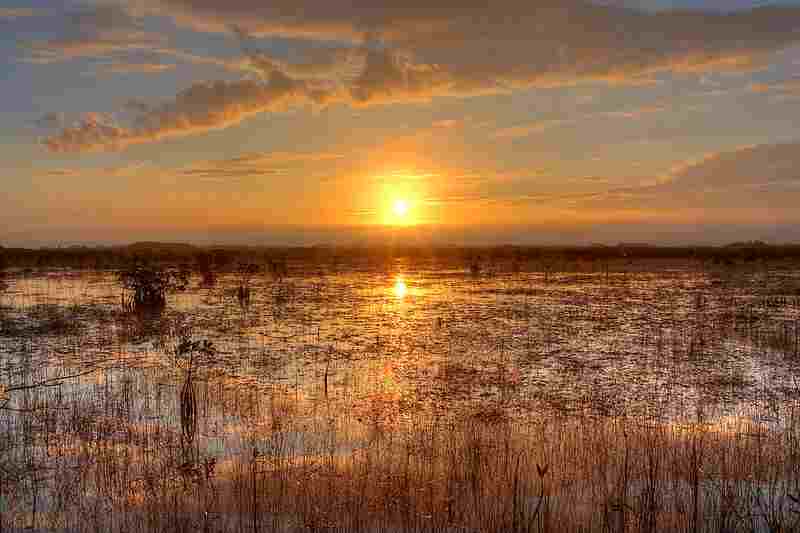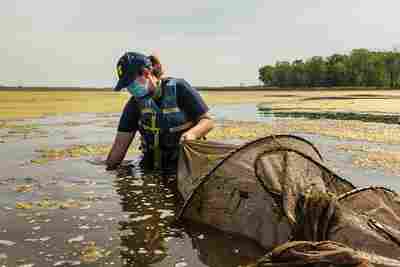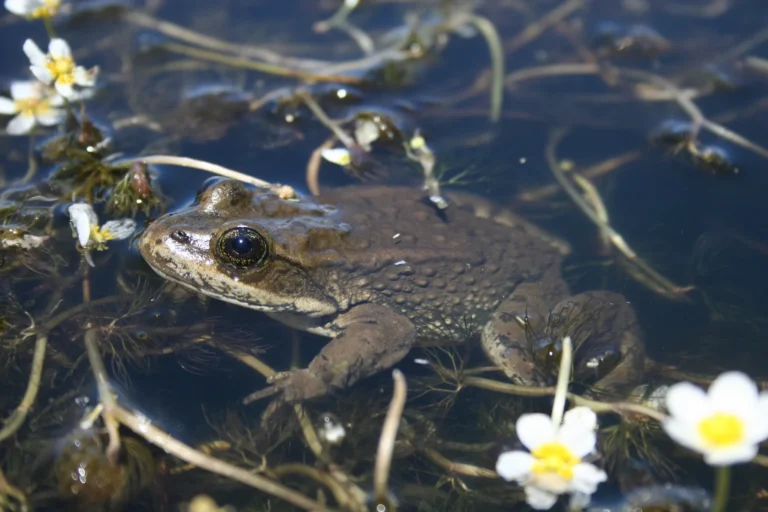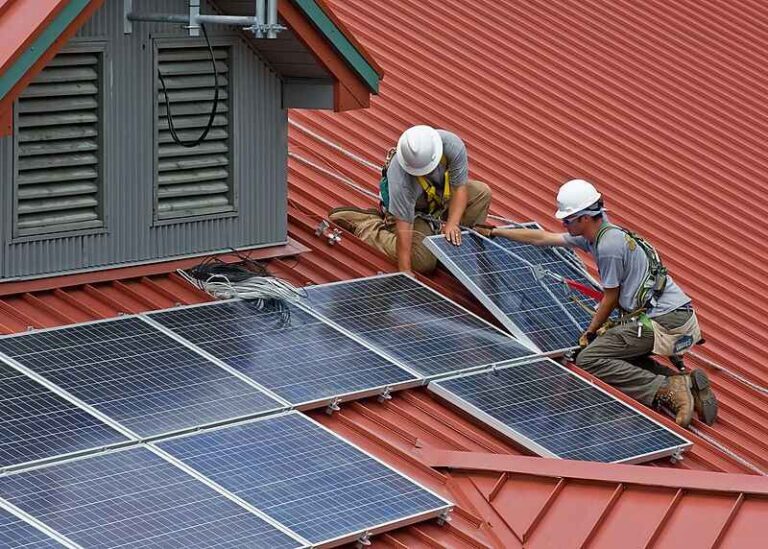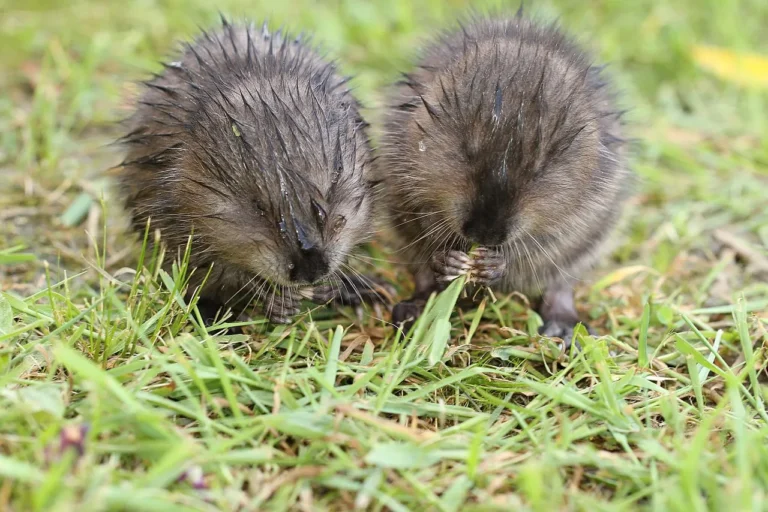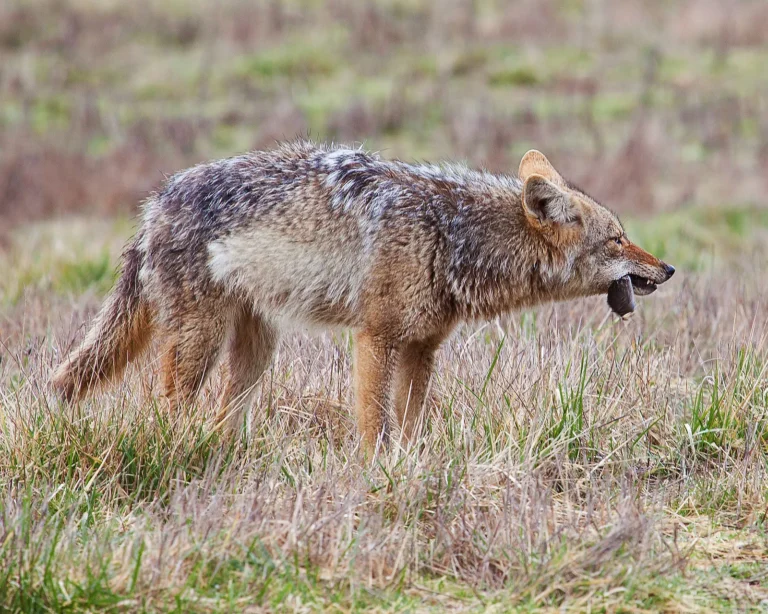20 Wetland Locations in the World and Their Characteristics
Wetland locations in the world include; freshwater margins (Mississippi River Basin, North America; Amazon River Basin, South America; Lake Victoria, East Africa; Great Lakes region, North America; Pantanal, South America; Okavango Delta, Botswana; Mekong River Delta, Vietnam; Nile River Delta, Egypt), isolated topographic depressions (Chihuahuan Desert, Mexico; Great Salt Lake, Utah; Alvord Desert, Oregon; The "Duck Factory" or Prairie Pothole Region; Central Valley, California), riparian floodplains (Okavango Delta, Botswana; Everglades, Florida, USA; Pantanal (Brazil and Bolivia)), inland groundwater-upwelling zones (Hula Valley, Israel; Okefenokee Swamp, USA; Vasyugan Swamp, Russia), coastlines and estuaries (Sundarbans (Bangladesh and India)).
This article discusses wetland locations in the world and their attributes, as follows;
1). Freshwater Margins (as one of the Wetland Locations in the World)
Freshwater margins represent one of the notable wetland locations in the world.
Wetlands that are located in freshwater margins, are distinctive ecosystems which generally form at the interface between the land, and freshwater bodies like streams, rivers; lakes and ponds.
Characteristics of wetlands located in/on freshwater margins include waterlogged or saturated soils, and combined terrestrial-aquatic influences.
Ecological Roles/Functions of Freshwater Margin Wetlands
Freshwater margin wetlands play multiple, important ecological roles within their environment.
These include;
1. Habitat creation for semi-aquatic, and aquatic organisms
2. Provision of breeding grounds and nurseries for various species including amphibians, reptiles, fish, and migratory birds [15]
3. Regulation of water flow
4. Improvement of regional water quality through natural filtration [10]
5. Erosion mitigation and land stabilization
6. Flood control
Examples of Wetlands in Freshwater Margins Around the World
Examples of freshwater margin wetlands around the world include some riparian, low-lying floodplain, deltaic, and lake-margin wetlands. Each of these is a distinctive geographic category of wetland, that can coincide with the margins of freshwater basins, as shown in the discussion below;
*Riparian Wetlands in Freshwater Margins
Riparian freshwater-margin wetlands can be found along the banks of streams and rivers, and are influenced by flow-dynamics and periodic flooding of adjacent water bodies [16].
This type of wetland can be found along the margins of the Mississippi River Basin in North America, and the Amazon River Basin in South America, respectively. Each of these water basins are associated with extensive riparian wetlands.
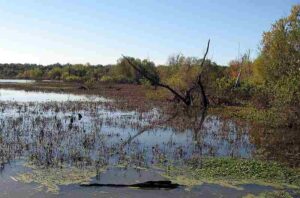
*Floodplain Wetlands in Freshwater Margins
Floodplain wetlands are found in low-lying areas adjacent to freshwater bodies, and experience significant inundation during flood events [3].
Examples of such wetlands occur extensively in the Pantanal in South America, and the Okavango Delta in Botswana.
*Deltaic Wetlands in Freshwater Margins
Deltas are fluvio-marine features that form at river mouths, where freshwater mixes with saline water from the ocean [11].
These wetlands are dynamic in nature, and experience continuous change, as a result of the combined influence of freshwater and marine sources.
Examples of deltaic wetlands that coincide with freshwater margins include; Mekong River Delta in Vietnam, and Nile River Delta in Egypt [4].
*Lake Margin Wetlands
Wetlands can occur along the edges or margins of freshwater lakes.
Such wetlands are usually influenced by regional hydrological processes (of the adjacent lake system) and periodic fluctuations in water level.
Lake margin wetlands can be found in Lake Victoria, East Africa [8], and the Great Lakes region, North America.
Summary on Freshwater Margins as Wetlands Locations
Most freshwater wetlands are located in regions that have abundant freshwater resources, and can be found across tropical, boreal, and temperate zones. They occur in various geographic locations in the world, including Africa, Asia, Europe, Oceania, North and South America.
2). Isolated Topographic Depressions
Wetlands located in isolated topographic depressions are waterlogged, flood-prone ecozones that develop in topographic basins or low-lying areas, where water accumulates.
Accumulation of water in these zones is the result of multiple influences from factors like groundwater, surface runoff, and precipitation.
Characteristics of these wetlands include drastic temporal changes, and relatively-hallow water depths.
Types and Examples of Wetlands Located in Isolated Topographic Depressions
Isolated topographic depressions can accommodate various types of wetlands, and may take various forms including playas, prairie potholes, and vernal pools [9].
These wetlands possess distinct ecological and hydrological features that usually support a specialized range of animal and plant species. Below are brief respective discussions of each of the wetland forms listed above;
*Playas
Playas are relatively-flat and shallow basins that are periodically filled with water, usually during the rainy season [14].
They commonly occur in semiarid and arid regions, including locations like the Chihuahuan Desert (Mexico) and southwestern United States.
Other examples of locations where playas are found include; the Great Salt Lake, Utah; and the Alvord Desert, Oregon.
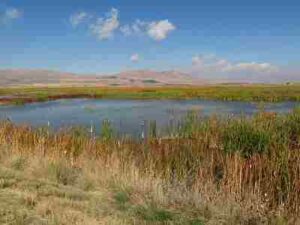
*Prairie Potholes
Prairie potholes are shallow and relatively-small wetlands that occur in depressions, on the prairie landscape.
They can be found in the Canadian Prairie Provinces, and the northern United States.
The "Duck Factory" or Prairie Pothole Region, is an important breeding ground for waterfowl [12].
*Vernal Pools
Vernal pools are seasonal, temporary wetlands which usually form in shallow depressions.
They often occur in Mediterranean zones, such as California in the United States, where climatic patterns feature wet winters and dry summers [1]. Extensive vernal pool habitats can be found in the Central Valley of California.
Biodiversity of Wetlands in Isolated Topographic Depressions
Wetlands located in isolated topographic depressions, provide important habitats for diverse organic species, including some amphibians, reptiles, waterfowl, and invertebrates.
These organisms contribute to the overall biodiversity of the wetland landscape, and serve as important stopover sites for migratory organisms like birds.
Seasonal Depressional Wetlands
Seasonal depressional wetlands, as the name implies, are wetlands that are characterized by continuous fluctuations in water levels throughout the year.
They are typically saturated during rainy seasons or periods of high water supply, and may shrink or totally dry out during drier periods.
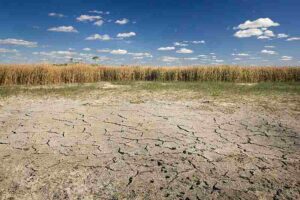
Wetland Locations in the World
Wetlands can be found in various locations around the world; which include riverine systems, estuaries, freshwater lakes, and coastal areas.
They are well-represented in all continents except Antarctica and occur in both natural and human-modified environments.
Although wetlands also occur in polar-desert regions like the Arctic and Antarctic; those which are found in the Antarctic are distinct in their lack of flora and macrofauna, which is in turn due to the extreme frigid conditions [17].
Comparative Assessment of Wetland Distribution in Countries
The country with the most wetland areas in the world is difficult to determine due to the constantly-changing nature of wetlands, and the diverse criteria for classifying and evaluating them.
However, countries with significant wetland representation include; Brazil, Canada, United States, Russia, and Indonesia, among others.
These countries encompass vast regions that are prone to long-term saturation, so that they form diverse types of wetlands, including floodplain (riverine) wetlands, peatlands and coastal wetlands.
3). Riparian Floodplains (as one of the Wetland Locations in the World)
Wetlands located in riparian floodplains are ecologically distinct habitats, which occur along the banks of water bodies like streams and rivers.
Characteristics of these wetlands include periodic flooding and close proximity to water bodies.
Riparian wetland areas serve as transitional zones between aquatic and terrestrial ecosystems, and tend to exhibit a broad range of ecological, hydrological, and biological attributes.
They provide numerous ecological benefits and functions to both aquatic habitats and the surrounding landscape.
Examples of Riparian Wetlands in the World
Examples of riparian wetland locations in the world, are; Okavango Delta (Botswana); Everglades, Florida (USA); Pantanal (Brazil and Bolivia).
*Okavango Delta, Botswana
The Okavango Delta is a large inland delta that occurs in Botswana.
Its features include a network of lagoons, floodplains and channels, floodplains; as well as relatively-high species richness.
It is a notable example of a riparian wetland, and supports a diverse range of wildlife, including various bird species, and mammals like the hippopotamus [6].
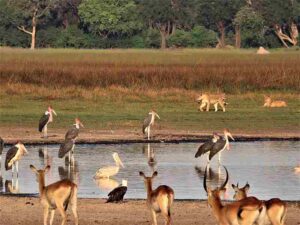
*Everglades, Florida, USA
The Everglades can be described as a vast wetland complex that occurs in southern Florida,
It includes riparian wetlands along the Kissimmee River, and an extensive grass-vegetated zone called the "River of Grass" [13].
The Everglades plays host to diverse species of plants and animals, and is an important habitat for aquatic and semi-aquatic organisms including alligators and wading birds.
*Pantanal (Brazil and Bolivia)
The Pantanal is considered to be the largest tropical wetland in the world, as well as the world's largest freshwater wetland [2].
It is located mainly in Brazil, but extends into Bolivia and Paraguay.
The Pantanal can be described as a vast floodplain zone, with a complex network of lakes, marshes and rivers. It is renowned for its immense biodiversity, and hosts animals like caimans, jaguars, and several bird species.
Ecological Functions of Riparian Floodplain-Wetlands
The functions of riparian floodplain wetlands include; habitat provision, regional water quality improvement, productivity and nutrient cycling, as well as erosion prevention and flood control.
Each of these is briefly discussed below;
*Habitat Provision by Riparian Floodplain-Wetlands
Riparian wetlands provide a habitat for a specialized range of plant and animal species, including amphibians, birds, mammals, and fish.
They serve as besting sites, breeding grounds, and migration pathways for wildlife movement.
*Water Quality Improvement by Riparian Wetlands
Riparian wetlands are natural filters that intercept pollutants and trap sediments, so that excess nutrients and contaminants are removed from water before it flows downstream.
*Productivity and Nutrient Cycling
Riparian wetland generally contribute to nutrient cycling on a regional scale, through the interactions of biotic and abiotic factors that capture, utilize, transform and recycle biomass from organic to inorganic forms.
Through recycling of resources like nutrients, the growth of vegetation in riparian wetlands is enhanced, which in turn builds a reliable foundation for the food chain.
*Erosion Prevention and Flood Control
The dense vegetation and interconnected root systems of riparian wetland zones. help mitigate erosion by stabilizing soil, and absorbing stormwater (that would otherwise cause regional flooding).
Characteristics of Riparian Floodplain Wetlands
Characteristics of a healthy riparian wetland zone include; stabilized streambanks, natural regeneration and vegetation diversity, as well as floodplain connectivity
*Streambank Stability
Healthy riparian wetland zones are characterized by stable streambanks that are held firmly by well-developed root systems.
These root systems (and other supporting structures) help maintain the geomorphology and channel structure of riparian wetlands, while preventing erosion and adjacent land-flooding.
*Natural Regeneration and Vegetation Diversity
Natural regeneration processes occur in healthy riparian zones, including seed dispersal and germination, which support the establishment of new vegetation.
Healthy riparian wetlands also host a relatively-diverse array of plant species, which include herbaceous plants, shrubs and trees.
This diversity promotes ecological resilience, and creates microhabitat niches.
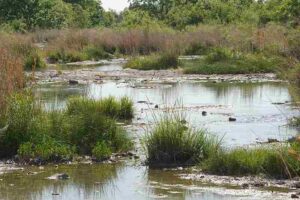
*Floodplain Connectivity of Riparian Wetland Locations in the World
Healthy riparian wetland zones, are usually characterized by natural hydrological connectivity between floodplains and adjacent rivers or streams, which enables flood attenuation, nutrient translocation, and water conservation.
4). Inland Groundwater-Upwelling Zones
Wetlands located in inland groundwater-upwelling zones are a group of semi-aquatic and ecologically important habitats, which occur in areas where groundwater emerges at the surface to create water-saturated conditions.
These wetlands are heavily dependent on groundwater as a primary source of recharge, which results in their unique hydro-ecological characteristics.
Inland Groundwater-Upwelling Wetland Locations in the World
Inland groundwater-upwelling wetlands can be found in various locations around the world, including; Hula Valley (Israel), Okefenokee Swamp (USA), and Vasyugan Swamp (Russia).
*Hula Valley, Israel
The Hula Valley in northern Israel is a lake-dominated zone [5], in which some inland wetlands (swamps) have also evolved.
These wetlands are recharged with water from underground aquifers, as well as from the Jordan River. The area serves as a site for migratory birds, and has significant biodiversity.
*Okefenokee Swamp, USA
The Okefenokee Swamp is located in southeastern Georgia, United States, and can be described a a vast inland wetland with unique hydrological characteristics.
It receives groundwater from the Floridan Aquifer system, and is habitat for diverse species of plants and animals.
*Vasyugan Swamp, Russia
The Vasyugan Swamp is one of the world's largest inland wetlands, located in western Siberia.
It is saturated by upwelling groundwater from the saline, West Siberian artesian basin, and is habitat for specialized plant and animal communities, including endangered species.
Ecological Functions, Benefits of Inland Groundwater-Upwelling Wetlands
Inland groundwater-upwelling wetlands perform several ecological functions an have multiple benefits; including biodiversity support, groundwater replenishment, carbon sequestration, water regulation and storage. Each of these is discussed briefly below;
*Biodiversity Support by Inland Groundwater-Upwelling Wetlands
Many inland wetlands serve as habitat for a wide range of animal and plant species, several of which have developed specialized adaptations for survival in wetland habitats.
The wetlands support biodiversity by providing foraging areas, nesting sites and breeding grounds for various organisms.
*Groundwater Replenishment
Because they are groundwater-upwelling zones, these wetlands play a vital role in replenishing and recharging groundwater reserves, so that precipitation is easily infiltrated through sediments on the surface, into underground aquifers
Inland groundwater-upwelling wetlands, contribute to the overall maintenance of water balance in their environment.
*Carbon Sequestration in Inland Wetlands
Inland wetlands are capable of storing large amounts of organic carbon [19].
These zones capture and sequester carbon dioxide from the atmosphere by the activities of plants and the dynamics of soil and water, so that they help mitigate climate change on various scales.
Water Regulation and Storage
These wetlands are absorbent natural reservoirs for water resources from both above-ground and underground sources.
They are involved in regulating and storing groundwater in terms of both abundance and flow pattern, thereby maintaining water availability in dry season, and reducing the impacts of flooding in rainy/wet season.
5). Coastlines and Estuaries (as one of the Wetland Locations in the World)
Wetlands that are located in coastlines and estuaries are highly productive, unique ecosystems that occupy the interface between land and water.
These wetlands are subject to both tidal and wave forces [8], which influence their development.
They also exhibit distinct ecological attributes and perform multiple functions.
Coastal Wetland Locations in the World
Coastal wetlands occur along the coastlines of islands and continents around the world.
Different types of wetland can be classified within this category; including mangrove forests, sedimented seagrass beds and salt marshes. An examples of coastal wetland locations in the world is Sundarbans (Bangladesh and India).
Other locations have been discussed earlier in this article; such as Okavango Delta and Everglades, can also be said to contain coastal wetlands.
*Sundarbans (Bangladesh and India)
The Sundarbans is considered to be the largest mangrove forest in the world [7].
It is situated in the Ganges-Brahmaputra delta area that stretches between Bangladesh and India.
Sundarbans is a UNESCO World Heritage Site, and plays host to an assemblage of unique and rare flora and fauna, which include the iconic Bengal tiger.
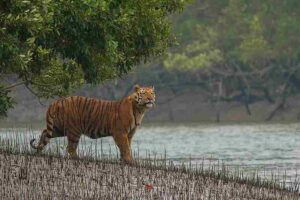
*Everglades (USA)
The Everglades in Florida, USA; is a vast area that includes coastal wetland systems, and encompasses both mangrove forests and freshwater marshes.
The location is renowned for its biodiversity, being an important habitat for numerous species.
*Okavango Delta (Botswana)
The Okavango Delta is a large inland delta that occurs in Botswana.
It includes areas that can be viewed as a classic example of unique coastal wetlands, with the Okavango River spreading out over a large area to create a mosaic of water-saturated zones, alongside islands and channels.
The delta also supports diverse wildlife.
Estuarine Wetlands
Estuarine wetlands are generally situated at the interface between rivers and the ocean, where mixing of freshwater and saltwater occurs.
They are found in sheltered zones like river-mouths, inlets and bays. An example of estuarine wetlands locations in the world is; Hauraki Gulf (New Zealand). Others like Chesapeake Bay (USA) can also be said to host estuarine wetland ecosystems.
*Hauraki Gulf (New Zealand)
The Hauraki Gulf located near Auckland, New Zealand, is an extensive marine park with coastal and estuarine ecosystems.
Its areal coverage encompasses both coastal and estuarine wetlands, and supports a range of diverse marine life, including shellfish beds, seabirds and dolphins.
*Chesapeake Bay (USA)
The Chesapeake Bay is a large estuarine zone in the United States, that encompasses a complex network of marshes, tidal flats and rivers. It provides important habitat for numerous species of migratory birds, shellfish and fish.
Roles/Functions of Coastal Wetlands
Coastal wetlands play various roles in the environment, including;
1. Habitat provision
2. Shoreline stabilization
3. Erosion control
4. Nursery and breeding site-provision
5. Carbon sequestration
6. Nutrient cycling
7. Water filtration
Conclusion
Wetland locations in the world include;
1. Freshwater Margins
a). Mississippi River Basin, North America
b). Amazon River Basin, South America
c). Lake Victoria, East Africa
d). Great Lakes region, North America
e). Pantanal, South America
f). Okavango Delta, Botswana
g). Mekong River Delta, Vietnam
h). Nile River Delta, Egypt
2. Isolated Topographic Depressions
a). Chihuahuan Desert, Mexico
b). Great Salt Lake, Utah
c). Alvord Desert, Oregon
d). The "Duck Factory" or Prairie Pothole Region
e). Central Valley, California
3. Riparian Floodplains
a). Okavango Delta, Botswana
b). Everglades, Florida, USA
c). Pantanal (Brazil and Bolivia)
4. Inland Groundwater-Upwelling Zones
a). Hula Valley, Israel
b). Okefenokee Swamp, USA
c). Vasyugan Swamp, Russia
5. Coastlines and Estuaries
a). Sundarbans (Bangladesh and India)
References
1). Barbour, M. G.; Solomeshch, A.; Holland, R. F.; Witham, C. W.; Macdonald, R. L.; Cilliers, S. S.; Molina, J. A.; Buck-Diaz, J.; Hillman, J. M. (2005). "Vernal pool vegetation of California: Communities of long-inundated deep habitats." Phytocoenologia 35(2-3):177-200. Available at: https://doi.org/10.1127/0340-269X/2005/0035-0177. (Accessed 18 July 2023).
2). Berlink, C. N.; Lima, L.; Pereira, A. M. M.; Carvalho, E. Jr.; de Paula, R. C.; Tomas, W. M.; Morato, R. (2021). "The Pantanal is on fire and only a sustainable agenda can save the largest wetland in the world." Brazilian journal of biology = Revista brasleira de biologia 82(42):e244200. Available at: https://doi.org/10.1590/1519-6984.244200. (Accessed 18 July 2023).
3). Dong, X.; Hu, C. (2021). "A new method for describing the inundation status of floodplain wetland." Ecological Indicators 131(10):108144. Available at: https://doi.org/10.1016/j.ecolind.2021.108144. (Accessed 18 July 2023).
4). El-Shazly, M. (2019). "The impact of some anthropogenic activities on river Nile delta wetland ecosystems." Available at: https://doi.org/10.17352/gje.000008. (Accessed 18 July 2023).
5). Hambright, K. D.; Zohary, T. (1998). "Lakes Hula and Agmon: Destruction and creation of wetland ecosystems in northern Israel." Wetlands Ecology and Management 6(2):83-89. Available at: https://doi.org/10.1023/A:1008441015990. (Accessed 18 July 2023).
6). Inman, V.; Bino, G.; Kingsford, R. T.; Chase, M. J.; Leggett, K. E. A. (2021). "Temporal and spatial patterns of common hippopotamus populations in the Okavango Delta, Botswana." Freshwater Biology 67(3). Available at: https://doi.org/10.1111/fwb.13868. (Accessed 18 July 2023).
7). Ismail, H. M.; Nabi, R.; Nayeem, M.; Ansari, A.; Latif, A.; Mahmud, R.; Islam, M. S. (2016). "Ecosystem Services of the World Largest Mangrove Forest Sundarban in Bangladesh." Available at: https://www.researchgate.net/publication/331302242_Ecosystem_Services_of_the_World_Largest_Mangrove_Forest_Sundarban_in_Bangladesh. (Accessed 18 July 2023).
8). Kansiime, F.; Saunders, M.; Loiselle, S. (2007). "Functioning and Dynamics of Wetland Vegetation of Lake Victoria: An Overview." Wetlands Ecology and Management 15(6):443-451. Available at: https://doi.org/10.1007/s11273-007-9043-9. (Accessed 18 July 2023).
9). Lane, C. R.; D'Amico, E. (2016). "Identification of Putative Geographically Isolated Wetlands of the Conterminous United States." JAWRA Journal of the American Water Resources Association 52(3). Available at: https://doi.org/10.1111/1752-1688.12421. (Accessed 18 July 2023).
10). McCalla, L.; Phillips, B. M.; Anderson, B. S.; Voorhees, J. P.; Siegler, K.; Faulkenberry, K. R.; Goodman, M.; Deng, X.; Tjeerdema, R. S. (2022). "Effectiveness of a Constructed Wetland with Carbon Filtration in Reducing Pesticides Associated with Agricultural Runoff." Springer, Archives of Environmental Contamination and Toxicology 82(3):1-13. Available at: https://doi.org/10.1007/s00244-021-00909-0. (Accessed 18 July 2023).
11). Mikhailov, V.; Mikhailova, M.; Rets, E. (2007). "River and sea water interaction and delta formation in tidal mouth area of the Fraser River (Canada)." Water Resources 34(5):571-586. Available at: https://doi.org/10.1134/S0097807807050120. (Accessed 18 July 2023).
12). Reynolds, R. E.; Shaffer, T. L.; Loesch, C. R.; Cox, R. R. Jr. (2006). "The Farm Bill and Duck Production in the Prairie Pothole Region: Increasing the Benefits." Wildlife Society Bulletin 34(4):963-974. Available at: https://doi.org/10.2193/0091-7648(2006)34%5B963:TFBADP%5D2.0.CO;2. (Accessed 18 July 2023).
13). Richardson, C. (2010). "The Everglades: North America’s subtropical wetland." Wetlands Ecology and Management 18(5):517-542. Available at: https://doi.org/10.1007/s11273-009-9156-4. (Accessed 18 July 2023).
14). Schneider, A. D.; Jones, O. R. (1983). "Basin Recharge of Playa Water." Journal of Irrigation and Drainage Engineering 109(3). Available at: https://doi.org/10.1061/(ASCE)0733-9437(1983)109:3(309). (Accessed 18 July 2023).
15). Uzarski, D.; Bosch, A. T.; Cooper, M. J. (2009). "Wetland Ecology and Management for Fish, Amphibians and Reptiles." Encyclopedia of Inland Waters (pp.582-589). Available at: https://doi.org/10.1016/B978-012370626-3.00059-4. (Accessed 18 July 2023).
16). Wantzen, K. M.; Yule, C. M.; Tockner, K.; Junk, W. J. (2008). "Riparian Wetlands of Tropical Streams." Available at: https://doi.org/10.1016/B978-012088449-0.50009-1. (Accessed 18 July 2023).
17). Wlotowski, A. N.; Schulte, N.; Adams, B.; Ball, B. A.; Esposito, R. M. M.; Gooseff, M.; Lyons, W. B.; Nielsen, U. N.; Virginia, R.; Wall, D. H.; Welch, K. A.; Mcknight, D. M. (2019). "The Hydroecology of an Ephemeral Wetland in the McMurdo Dry Valleys, Antarctica." Wiley, Journal of Geophysical Research: Biogeosciences 124(30). Available at: https://doi.org/10.1029/2019JG005153. (Accessed 18 July 2023).
18). Wolanski, E.; Brinson, M. M.; Cahoon, D.; Perillo, G. M. E. (2009). "Coastal Wetlands: A Synthesis." Coastal Wetlands: An Integrated Ecosystem Approach (pp.1-62). Available at:
19). Yoo, J.; Kim, J.; Kim, J.; Lim, J.; Kang, H. (2022). "Soil carbon storage and its economic values of inland wetlands in Korea." Ecological Engineering 182(24):106731. Available at: https://doi.org/10.1016/j.ecoleng.2022.106731. (Accessed 18 July 2023).
